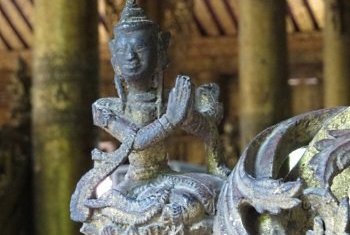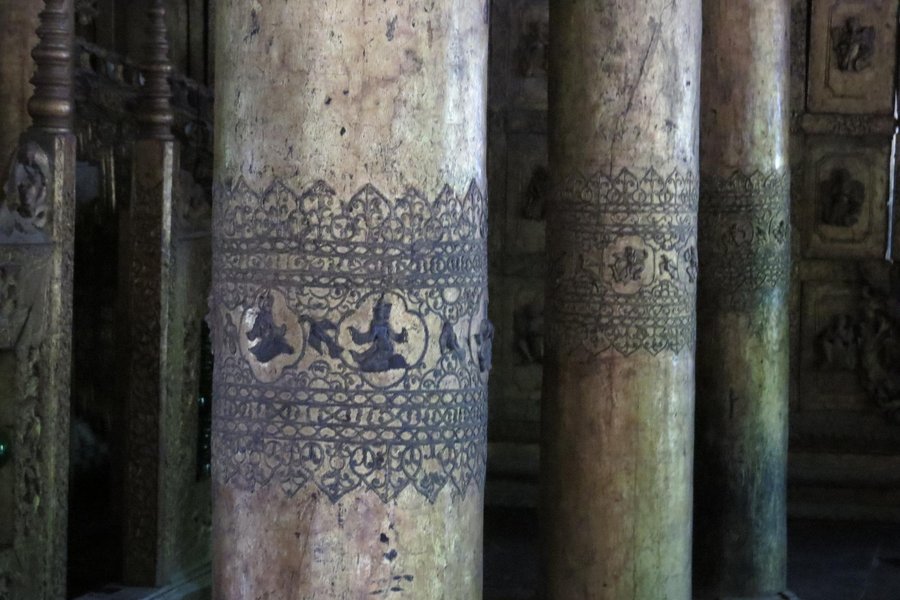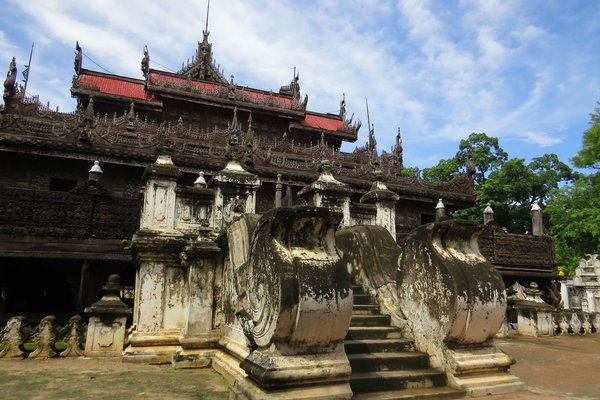Myanmar
Wooden Monasteries of Konbaung Period
Site Info
Official Information
- Full Name
- Wooden Monasteries of Konbaung Period : Ohn Don, Sala, Pakhangyi, Pakhannge, Legaing, Sagu, Shwe-Kyaung (Mandalay) (ID: 821)
- Country
- Myanmar
- Status
-
On tentative list 1996
Site history
History of Wooden Monasteries of Konbaung Period
- 1996: Added to Tentative List
- Added to tentative list
- Type
- Cultural
- Criteria
Links
- UNESCO
- whc.unesco.org
- Related
-
- orientalarchitecture.com — Oriental Architecture: Shwenandaw Kyaung Temple
All Links
UNESCO.org
- whc.unesco.org — whc.unesco.org
Related Resources
- orientalarchitecture.com — Oriental Architecture: Shwenandaw Kyaung Temple
News Article
- Dec. 4, 2019 irrawaddy.com — Myanmar Called on to Protect 140-Year-Old Cultural Heritage Site From Tourist Damage
- Nov. 23, 2017 irrawaddy.com — Project to Restore Shwe Kyaung Resumes
Community Information
- Community Category
- Religious structure: Buddhist
Travel Information
Recent Connections
News
- irrawaddy.com 12/04/2019
- Myanmar Called on to Protect 140-Y…
- irrawaddy.com 11/23/2017
- Project to Restore Shwe Kyaung Res…
Recent Visitors
Visitors of Wooden Monasteries of Konbaung Period
- AC
- Bernard Joseph Esposo Guerrero
- Bram de Bruin
- Cheryl
- Clyde
- Dimitar Krastev
- Els Slots
- Errol Neo
- George Gdanski
- Hammeel
- Ingrid
- Jacob Otten
- Javier Coro
- Joel on the Road
- jonathanfr
- Jonoprout
- Luboang
- Luke LOU
- Monica Tasciotti
- PabloNorte
- Paul Schofield
- Riccardo Quaranta
- Roman Bruehwiler
- Sergio Arjona
- Shandos Cleaver
- Shannon O'Donnell
- Solivagant
- Stanislaw Warwas
- Thomas Buechler
- Tim Allen
- Truls Brekke
- Vanessa Buechler
- Van Hung
- Vernon Prieto
- Zizmondka
Community Reviews
Show full reviewsEls Slots
Wooden Monasteries of Konbaung Period
Wooden Monasteries of Konbaung Period (On tentative list)

The Konbaung Dynasty was the last Burmese monarchy before British colonial rule started in 1885. With their expansionist agenda they set the current borders for Myanmar. Since 1996 a group of 7 Wooden Monasteries from the Konbaung Period has been on Myanmar’s Tentative List. They are located in Ohn Don, Sala, Pakhangyi, Pakhannge, Legaing, Sagu and Mandalay – scattered roughly in the area between Mandalay and Bagan. In contrast to the earlier brick architecture of the Pyu and Bagan civilizations, these monasteries owe more to pre-Buddhist Southeast Asian house-building practices and beliefs than to Indian prototypes.
Shwe-Kyaung in Mandalay was my first encounter with these teak wood monasteries. I had been cycling around town all morning without seeing many tourists, but this is a major sight well on the beaten track of every tour guide. There’s an entrance fee to this and all other landmarks of Mandalay (valid for 5 days), costing 10,000 kyat / 7 EUR.
The building originally belonged to the royal palace and was intended as sleeping quarters for the king. After he died, the building was donated to a Buddhist monastery in 1883. It became known as the Golden Monastery, because the wood was completely gilded. Inside it has still partially retained its golden glow. The main attractions however are its many finely carved figures, especially the Jataka scenes. This was the most outstanding single monument that I saw in Myanmar.
At the end of my trip I set my sights on the fairly obscure Pakhangyi …
Keep reading 0 commentsClyde
Wooden Monasteries of Konbaung Period
Wooden Monasteries of Konbaung Period (On tentative list)

the highlight of these monasteries is Shwe Kyaung in Mandalay. Several antique wood carvings in good condition. Pakhangyi is the second best in my opinion. I think it is quite difficult for these monasteries to gain WHS status but you never know.
Keep reading 0 commentsSolivagant
Wooden Monasteries of Konbaung Period
Wooden Monasteries of Konbaung Period (On tentative list)

The Schwekyaung monastery included as part of this site is presumably also included in the Mandalay part of the “Ancient Cities” site since it is the only surviving building of Mandalay Palace (though is situated outside the original walls - see later!)? But never mind, it is a superb building and any visit to Mandalay must/will include it.
It was built by King Mindon during the 19th Century as a palace building and was originally sited at a previous Capital in nearby Amarapura. In 1857 he decided to move his capital (and many of its buildings!) to nearby Mandalay. Accordingly it was dismantled and rebuilt. There it became part of the Glass Palace and one of the royal apartments. King Mindon died there in 1878. His son King Thibaw subsequently used it for meditation but felt that his father’s spirit haunted the building and ordered it to be dismantled again and rebuilt outside the city. In so doing he gave to be a monastery as a "work of merit" for his father and it was rebuilt as such. As a result it is the only original building from the Mandalay palace, which was completely destroyed by Allied bombing of the Japanese supply dumps there in 1945.
The relative ease with which it could be dismantled and rebuilt arises from the design - of which it is one representative among 7 in this T List site. The Konbaung dynasty reigned from 1752 to 1885 when they finally succumbed to the British …
Keep reading 0 comments
